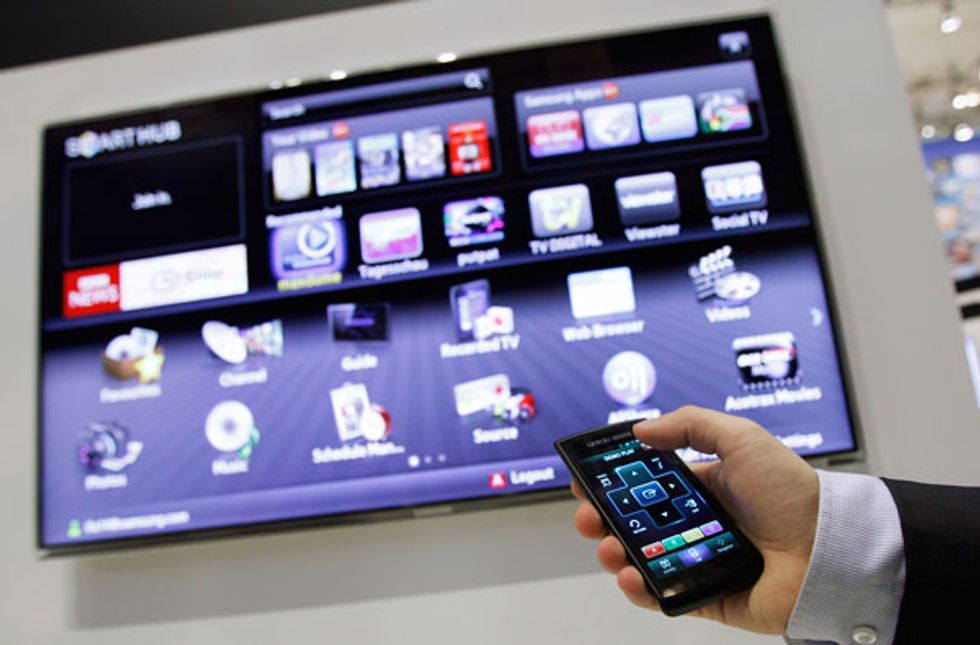
Many readers are probably old enough to remember selecting a television channel by turning a knob. With just a dozen positions, it was the picture of simplicity.
Today, you could make a control knob the size of a Studebaker hubcap and it still wouldn’t accommodate all our viewing options. Cable and satellite providers routinely offer hundreds of channels of programming and additional video-on-demand (VOD) choices.
In addition, your Blu‑ray player or your Wii—or a media player such as a Roku or a Western Digital box—lets you watch movies and other shows from Netflix, Hulu Plus, Amazon Instant Video, and Vudu.
But wait, there’s more. YouTube now gets one hour of new video uploaded to the site every second of every day. And that’s not just Justin Bieber song videos and kittens doing cute things; YouTube offers full-length movies. How are you going to build a channel dial for all that?
Fortunately, televisions are smarter than ever (the newest Samsung sets boast dual-core processors). The first step, though, is controlling them.
The traditional five-button control (power on/off, channel up/down, volume up/down) just doesn’t cut it when you need to navigate a complex electronic program guide (EPG), manage digital video recorder (DVR) functions, and stream content from the Internet. And designers know from bitter experience that just adding buttons does not get the job done.
One solution is to create a context-sensitive controller, which presents only the options that are meaningful at a given point. Making a selection results in a new control display from which you can make additional choices. Some controllers have achieved this using LCD panels lined with “soft” buttons that are reprogrammed depending on the image displayed on the screen. Some controllers now have touch screens, just like our tablets and smartphones.
Better, though, is to skip the remote control and just use those smartphones and tablets to directly control your TV. For example, Verizon Communications now has a unified smartphone app for its FiOS service that lets you manage your DVR settings, view EPG and VOD listings, and even control your set-top box over your wireless network.
Or just skip the controller entirely. The Microsoft Kinect and LG’s Magic Wand remote control, to name just two, let you control your television experience by waving your hand or making some other gesture. To be sure, using gestures to type on an on-screen keyboard when searching for a particular show can be tedious. As a result, some TV manufacturers include a full keyboard. (Samsung is again in the lead; its latest models offer not only an optional keyboard but one with a touch-pad control surface.)
The next step is to eliminate even the gestures. LG, Samsung, and others are incorporating speech recognition technology so that viewers can just say what they want, and the television will interpret the command. (Note that you will often see this referred to as “voice recognition,” a term best reserved for identifying a specific individual’s voice, typically for biometric security applications.) Unfortunately, some systems use a microphone built in to the remote control, so don’t think that automatically eliminates the problem of “Where’s the remote?”
But none of these interfaces make a dent in the bigger problem of finding the stuff you most want to watch.
An alphabetical or numerical list of all the scheduled and on-demand options is not very useful. So providers like iTunes organize items into genres, such as Action and Comedy, and other groupings, such as Top Movies.
The real power, however, comes when items are categorized across multiple axes. Perhaps you want to watch a recent action movie with, say, Bruce Willis or Nicolas Cage, one released later than 2005. This opens up the whole issue of metadata and the indexing of content. For any given movie or TV program, you might want to be able to search by a combination of title, cast member, year of release, content type, parental guidance rating, language, and more. This rapidly becomes a lot of data, especially for the many movies that fall into more than one category.
That’s already a difficult task for the tens of thousands of titles in the Netflix streaming catalog, but what do you do about that hour of video being uploaded every second to YouTube? The data set becomes enormous.
Search is not a complete solution. Back in the old days, we learned all we needed to know from TV Guide’s fall preview edition, but that wouldn’t get the job done today. We need an interface that also can make recommendations about movies and shows that it thinks we might enjoy.
There are three basic ways that systems are making these recommendations already. The simplest is based on popularity (for example, Top Shows or Most Viewed). There’s at least a better-than-random chance that you’ll like the titles that are getting the most views overall.
A more refined approach uses social media. If the system knows who your friends are and it knows what they’re watching, then perhaps you will enjoy those titles as well. Many systems are experimenting with giving viewers the opportunity to post about what they are watching, with the idea that this may influence what their friends choose to watch and spark conversations about the show.
The most sophisticated approach tracks the choices that you make and then mines an entire database to match as many criteria as possible, finds other viewers with tastes similar to yours, and uses their rankings to suggest titles you might enjoy.
One complication is that the viewing preferences of a given household are not monolithic—the preferences of any two or more family members watching together will differ from their separate predilections. How would Netflix, say, know who’s watching? To avoid the requirement of logging into the system each time, Samsung has built face recognition into some of its latest television models. Currently the feature controls only which apps are presented to the user, but it could be used for other functions as well.
Clearly this is a complex problem even for the well-organized virtual shelves of Netflix or Hulu Plus. The complexity grows exponentially when you try to create a universal guide to everything available in scheduled programming, VOD, and all the streaming options available on the anarchic Internet.
At this point, it becomes a Big Data problem, and the companies most likely to solve it are not the remote control makers, the television set makers, or even the broadcast networks themselves. Instead, the solution will most likely come from a company that already has developed expertise in handling enormous amounts of data on both information items and their users.
Amazon.com is one such company, as it already works hard to match shoppers with product choices from its wide-ranging catalog. This collection includes products that Amazon sells, as well as items that exist outside its own universe. The other obvious candidate is Google, which already knows a remarkable amount of information about its users and mines data as if it were a rare earth metal. Other companies could also play a role, such as Netflix, which continues to invest heavily in its recommendation systems.
Whatever the solution will turn out to be, it will not be based on a 12-position gang switch. Rather, it will draw from biometric and other sensors, social networks, and data mining. Your television will start to draw intelligence from the cloud, but it will also have to be pretty smart in its own right.
About the Author
Alfred Poor is a senior member of the Society for Information Display. At PC Magazine, he was a contributing editor for more than 20 years and the publication’s first lead analyst for business displays.
Alfred Poor is a technology speaker and writer with a focus on health tech. He was the editor of “Health Tech Insider,” a website that covered wearable and mobile devices for health and medical applications. He also helps tech company executives make a better impression in video meetings and online presentations. A graduate of Harvard College, he is the author or co-author of 15 books and is widely quoted in major media outlets.



